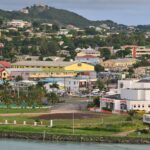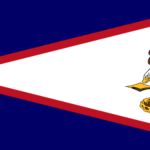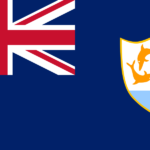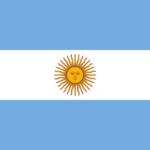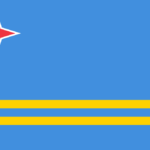Antigua and Barbuda
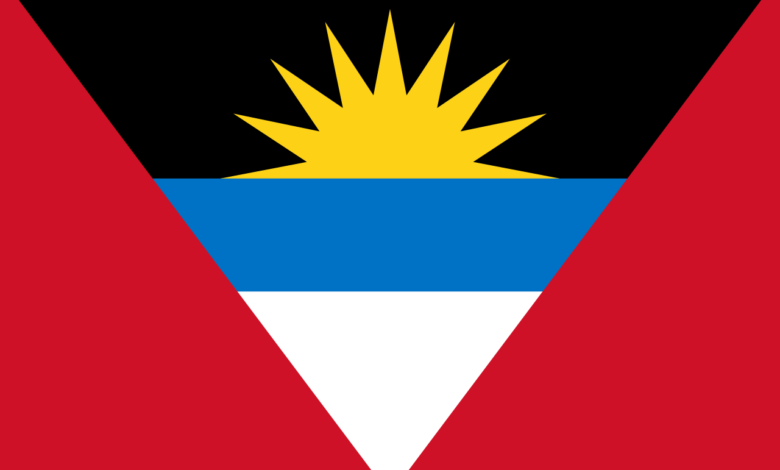
Let’s take you to discover Antigua and Barbuda, its capital city, key land borders, culture, languages that are spoken there and much more.
Antigua and Barbuda is part of the Leeward Islands that form an independent state in the Lesser Antilles in the eastern Caribbean Sea and consists of two inhabited main islands, “Antigua” and “Barbuda”, and a number of smaller islands and the small uninhabited Redonda island about 50 km west-southwest of Antigua.
The island nation shares maritime borders with Saint Kitts and Nevis, Anguilla (UK), Montserrat (UK) and Saint Barthélemy (France). There is one dependency, the small island of Redonda. The capital is St. John’s, in Antigua.
In 1493, Christopher Columbus reconnoitred the island of Antigua, which he named the Church of Santa María La Antigua. Great Britain colonized Antigua in 1632 and Barbuda in 1678. A part of the Federal Colony of the Leeward Islands from 1871, Antigua and Barbuda joined the West Indies Federation in 1958. With the breakup of the federation in 1962, it became one of the West Indies Associated States in 1967. Following a period of internal self-governance, it gained full independence from the United Kingdom on 1 November 1981. Antigua and Barbuda is a member of the Commonwealth and a Commonwealth realm; it is a constitutional monarchy with Charles III as its head of state.
Country profile
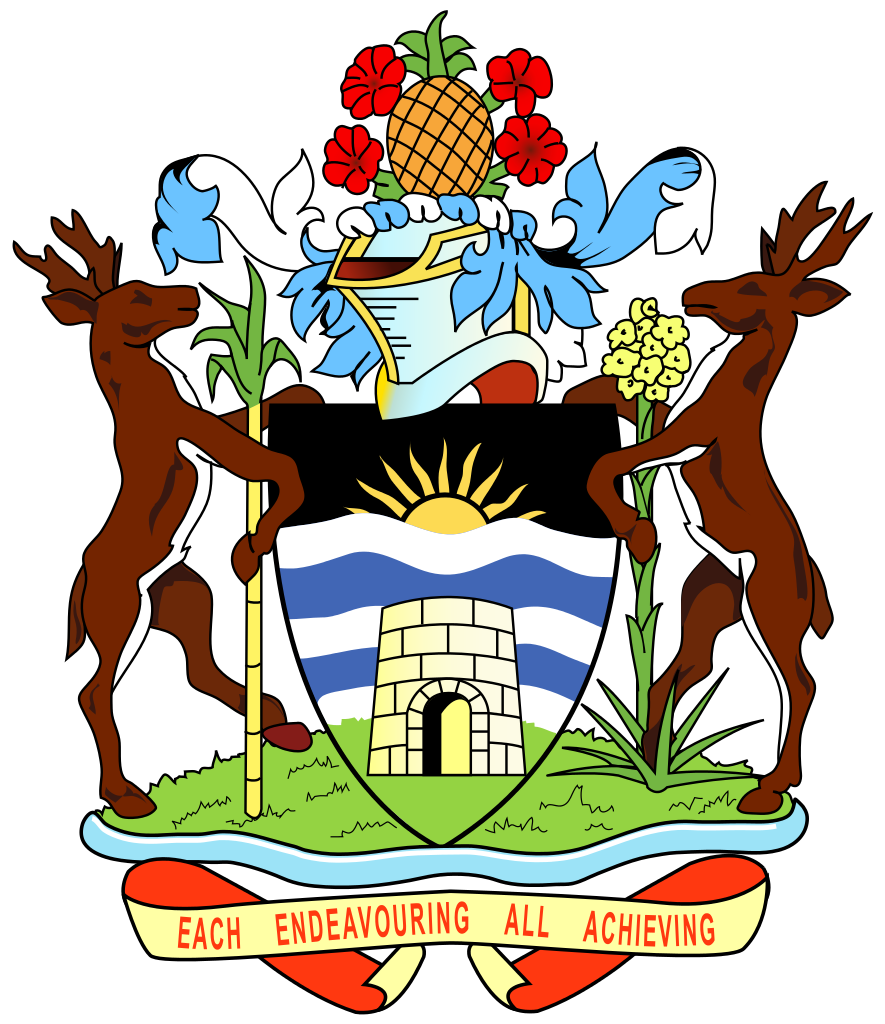
| Capital
and largest city
|
St. John’s 17°7′N 61°51′W |
|---|---|
| Vernacular language | Antiguan and Barbudan Creole |
| Working language | English |
| Ethnic groups
(2011)
|
|
| Religion
(2020)
|
|
| Demonym(s) | Antiguan and Barbudan Antiguan Barbudan |
| Government | Unitary dominant-party parliamentary constitutional monarchy |
|
• Monarch
|
Charles III |
|
• Governor-General
|
Sir Rodney Williams |
|
• Prime Minister
|
Gaston Browne |
| Legislature | Parliament |
|
• Upper house
|
Senate |
|
• Lower house
|
House of Representatives |
| Formation | |
|
• Union
|
23 September 1859 |
|
• Annexation of Redonda
|
26 March 1872 |
|
• Parish Boundaries Act
|
17 December 1873 |
|
• Associated State
|
27 February 1967 |
|
• Independence
|
1 November 1981 |
| Area | |
|
• Total
|
440 km2 (170 sq mi) |
|
• Water (%)
|
negligible |
| Population | |
|
• 2022 estimate
|
100,772 |
|
• 2011 census
|
84,816 |
|
• Density
|
186/km2 (481.7/sq mi) |
| GDP (PPP) | 2019 estimate |
|
• Total
|
$2.731 billion (196th) |
|
• Per capita
|
$29,298 |
| GDP (nominal) | 2019 estimate |
|
• Total
|
$1.717 billion (193rd) |
|
• Per capita
|
$18,416 (75th) |
| Gini | high |
| HDI (2019) | high · 78th |
| Currency | East Caribbean dollar (XCD) |
| Time zone | UTC-4 (AST) |
| Driving side | left |
| Calling code | +1-268 |
| ISO 3166 code | AG |
| Internet TLD | .ag |
|
Website
ab |
|
Etymology
Antigua is Spanish for ‘ancient’ and Barbuda is Spanish for ‘bearded’. The island of Antigua was originally called Wadadli by Arawak and is locally known by that name today; Caribs are possibly called Barbuda Wa’omoni. Christopher Columbus, while sailing by in 1493, may have named it Santa Maria la Antigua, after an icon in the Spanish Seville Cathedral. The “bearded” of Barbuda is thought to refer either to the male inhabitants of the island, or the bearded fig trees present there.
Government
Government:
Type: Constitutional monarchy with Westminster-style Parliament.
Head of State: Charles III
Independence: 1 November 1981 (from the UK).
Constitution: 1981.
Education
Education in Antigua and Barbuda is compulsory and free for children between the ages of 5 and 16 years. The system of education in Antigua and Barbuda is based on the British educational system. The school year begins in September and ends in June of the following year. In order to ensure that all costs related to schooling are covered by the government, there is an education levy on all basic wages in Antigua and Barbuda, with the funds used toward such costs as supplies, transportation, and school infrastructure maintenance.
Aid to Basic Education, the amount of bilateral and multilateral aid contributed or received by Antigua and Barbuda (source: UNESCO)
In 1972, the technical and teacher’s training colleges merged and formed the Antigua State College. Additional training options outside of the university are offered at the Antigua and Barbuda Institute of Information Technology (ABIIT) and the Antigua and Barbuda Hospitality Training Institute (ABHTI).
In 2019, the University of the West Indies opened its fifth campus overall (and fourth physical campus) in Five Islands. The country was previously served solely by the University of the West Indies Open Campus. The government of Antigua and Barbuda contributes financially to the UWI.
The island of Antigua currently has three foreign-owned for-profit offshore medical schools. The island’s medical schools cater mostly to foreign students but contribute to the local economy and health care. The three schools are:
- The American University of Antigua (AUA), was founded in 2004
- The University of Health Sciences Antigua (UHSA), founded in 1982
- The Metropolitan University College of Medicine.
Those interested in higher education also enrol at schools in the United States, Europe and Canada. The adult literacy rate is approximately 99%
The Geography of Antigua and Barbuda
With both Antigua and Barbuda being low-lying islands, the highest point on Antigua and Barbuda is Boggy Peak, (known as Mt Obama 2008–2016) located in southwestern Antigua, which is the remnant of a volcanic crater rising 402 metres.
As for the climatic conditions, Rainfall averages 990 mm (39 in) per year, with the amount varying widely from season to season. In general, the wettest period is between September and November. The islands generally experience low humidity and recurrent droughts. Temperatures average 27 °C (80.6 °F), with a range from 23 °C (73.4 °F) to 29 °C (84.2 °F) in the winter to form 25 °C (77.0 °F) to 30 °C (86.0 °F) in the summer and autumn. The coolest period is between December and February.
Like most island nations, Antigua and Barbuda faces unique environmental issues created by its proximity to the ocean and small size. These include pressures on water resources, natural ecosystems, and deforestation more generally.
Existing issues on the island are further made worse by climate change, where, unlike other island nations affected by climate change, sea level rise, and increased weather variability, create increased pressures on the communities on the islands and the land, through processes like coastal erosion and saltwater intrusion.
Languages and religion
In the years before Antigua and Barbuda’s independence, Standard English was widely spoken in preference to Antiguan Creole. Generally, the upper and middle classes shun Antiguan Creole. The educational system dissuades the use of Antiguan Creole and instruction is done in Standard (British) English.
As for religion, the majority among others are Christians (77%), with the Anglicans (17.6%) being the largest single denomination.
Official sites
Government of Antigua and Barbuda: Official site of the Government of Antigua and Barbuda.
Diplomatic Missions: High Commission of Antigua and Barbuda
The High Commission of Antigua and Barbuda in London promotes tourism and investment.
Recommended News sources
- Antigua Observer – Newspaper
- Antigua and Barbuda News -Antigua and Barbuda news is provided by the High Commission of Antigua and Barbuda.
- Caribarena – Antigua and Barbuda news.
Business and Economy
Tourism dominates Antigua and Barbuda’s economy, accounting for nearly 60% of GDP and 40% of the investment. Agricultural production is focused on the domestic market and constrained by limited water supply and a labour shortage stemming from the lure of higher wages in tourism and construction.
Antigua’s economy was severely hit by the global economic crisis and suffered from the collapse of its largest private sector employer, a steep decline in tourism, a rise in debt, and a sharp economic contraction between 2009-11.
Investment banking and financial services also make up an important part of the economy. Major world banks with offices in Antigua include the Royal Bank of Canada (RBC) and Scotiabank. Financial services corporations with offices in Antigua include Price Waterhouse Coopers, Pannell Kerr Forster, and KPMG.
Manufacturing comprises 2% of GDP and is made up of enclave-type assembly for export, the major products being bedding, handicrafts, and electronic components. Prospects for economic growth in the medium term will continue to depend on income growth in the industrialized world, especially in the United States, from which about one-third to one-half of all tourists come
Transport
Roads in the country are paved and follow a winding and gently sloping course connecting parishes to villages and communities. Driving is on the left-hand side. The speed limit is set at 40 mph, Traffic signs posted throughout main roads in Antigua and Barbuda allow for ease of commute, and with GPS coordinates posted throughout the country, the process of navigation has become even easier.
Good transport channels are;
- Airport Services Antigua Ltd. ASA
- Caribbean Star Airlines – Antigua-based airline.
LIAT – Antigua-based Caribbean airline. - Barbuda Express -Ferry service between Barbuda and Antigua.
Further reading
- BBC Country Profile
- The Commonwealth: Antigua and Barbuda
- LANIC Antigua and Barbuda
- Wikipedia
- The World Factbook
Towns and cities
St. John’s
Check Voyage info and Guide for St. John’s Here Check the weather in St. John’s Here St. John’s or Saint John’s is the capital city of Antigua and Barbuda which is part of the West Indies in the Caribbean Sea. It lies on…

